Denominator
In a fraction, the denominator is the bottom number that represents the total number of equal parts into which a whole is divided. It indicates the total number of parts that make up the whole. For example, in the fraction 3/4, the 4 is the denominator, indicating that the whole is divided into 4 equal parts.
The denominator is important in understanding the size and comparison of fractions. The larger the number in the denominator, the smaller each part is, and the smaller the number in the denominator, the larger each part is.
Understanding the denominator is essential for working with fractions and performing operations such as addition, subtraction, multiplication, and division of fractions.
[Denominator] Related Worksheets and Study Guides:
.◂Math Worksheets and Study Guides Kindergarten. Comparing, and ordering
Coloring Worksheet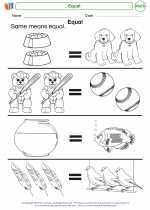 Equal
Equal  Coloring Worksheet
Coloring Worksheet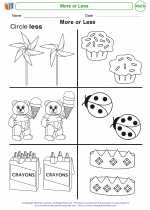 More or Less
More or Less  Coloring Worksheet
Coloring Worksheet More or Less
More or Less  Worksheet/Answer key
Worksheet/Answer key Volume and Capacity
Volume and Capacity  Worksheet/Answer key
Worksheet/Answer key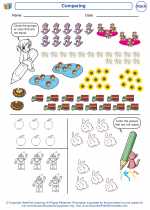 Comparing
Comparing  Worksheet/Answer key
Worksheet/Answer key Area
Area  Worksheet/Answer key
Worksheet/Answer key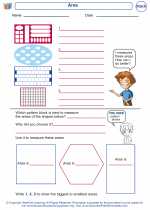 Area
Area  Worksheet/Answer key
Worksheet/Answer key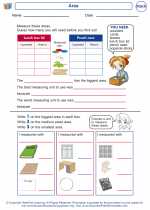 Area
Area  Worksheet/Answer key
Worksheet/Answer key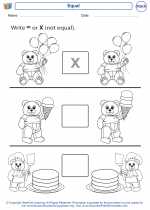 Equal
Equal 

 Coloring Worksheet
Coloring Worksheet
 Coloring Worksheet
Coloring Worksheet
 Worksheet/Answer key
Worksheet/Answer key
 Worksheet/Answer key
Worksheet/Answer key
 Worksheet/Answer key
Worksheet/Answer key
 Worksheet/Answer key
Worksheet/Answer key
 Worksheet/Answer key
Worksheet/Answer key
 Worksheet/Answer key
Worksheet/Answer key

The resources above cover the following skills:
Counting and Cardinality
Know number names and the count sequence.
Count to 100 by ones and by tens. [K-CC1]
Count forward beginning from a given number within the known sequence (instead of having to begin at 1). [K-CC2]
Count to tell the number of objects.
Understand the relationship between numbers and quantities; connect counting to cardinality. [K-CC4]
Understand that each successive number name refers to a quantity that is one larger. [K-CC4c]
Compare numbers.
Identify whether the number of objects in one group is greater than, less than, or equal to the number of objects in another group, e.g., by using matching and counting strategies. (Include groups with up to ten objects.) [K-CC6]
Operations and Algebraic Thinking
Understand addition as putting together and adding to, and understand subtraction as taking apart and taking from.
Represent addition and subtraction with objects, fingers, mental images, drawings, sounds (e.g., claps), acting out situations, verbal explanations, expressions, or equations. (Drawings need not show details, but should show the mathematics in the problem. This applies wherever drawings are mentioned in the Standards.) [K-OA1]
Solve addition and subtraction word problems, and add and subtract within 10, e.g., by using objects or drawings to represent the problem. [K-OA2]
Fluently add and subtract within 5. [K-OA5]